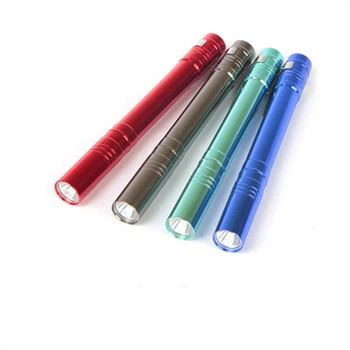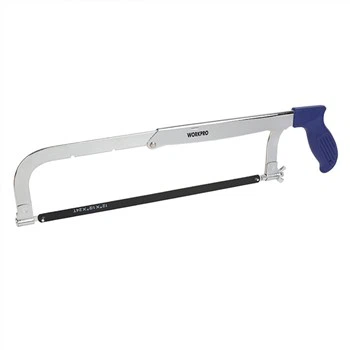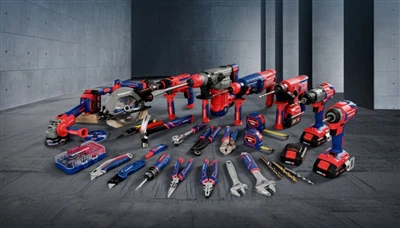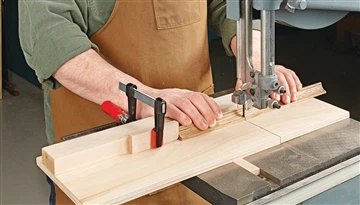A reciprocating saw is among the most important and practical instruments for do-it-yourselfers and construction workers, as we've already established. Nevertheless, the motor, design, and blade are not the only components that contribute to this tool's actual effectiveness. Reciprocal saw blades are the unsung heroes of every successful cut, whether it's through solid hardwoods or the simple demolition of concrete structures. Learn all about reciprocating saw blades-their varieties, construction, and uses-in this detailed overview. Come along as we reveal the tricks to choosing, sharpening, and caring for the ideal blade for any task that requires cutting.
Reciprocating Saw Blades: A Beginner's Guide
Where do you even start looking for reciprocating saw blades? Do it yourself, have no fear; we will provide the resources you need. There are two main factors to think about when selecting a reciprocating saw blade: performance and safety. However, what causes these to occur? I'll explain it in simple terms:
1.Materials and Types of Blades:

-
For cutting wood or softer metals, go for carbon steel blades-they're affordable and effective. But they aren't as long-lasting and dull down fast.
-
Blades made of bi-metal: a flexible spring steel body and high-speed steel teeth-ideal for cutting through plastic, metal, wood, and debris.
-
Stainless steel and aluminium, two of the hardest metals to cut, are perfect for use with high-speed steel blades because of their longevity and ability to retain their edge.
-
Blades Tipped with Carbide: These blades are the best of the best when it comes to cutting performance and longevity thanks to their carbide teeth.
2.Teeth Per Inch:
-
Thick and dense materials, such as metal and plastic, are ideal for low TPI (6 TPI) wheels. Rough edges may be left behind, but they cut quickly.
-
They are ideal for wood, metal, and plastic because of their medium TPI (8–14 TPI) that strikes a balance between speed and smoothness.
-
High tooth profile angle (TPI): Provides smoother cuts with a slower speed, making it ideal for cutting thin materials such as sheet metal and pipelines.
3.Thickness, width, and length of the blade:
-
The length of the blade determines how deep the cut may be. A shorter blade allows for more control, which is particularly useful in confined areas.
-
Increased stability, decreased deflection, and vibration are all benefits of a wider and thicker blade. For delicate cuts, a narrower blade is ideal.
4.The Status of the Brand and Its Quality
Spend your money on blades made by trusted brands such as WORKPRO which are known for their longevity, efficiency, and adaptability. Maximising the effectiveness of your cutting efforts is guaranteed with this method.
Effectively Cutting Lumber with the Best Reciprocating Saw Blades
To get those tree limbs and branches under control, you'll need a reciprocating saw blade that can handle the challenge! A special kind of reciprocating saw blade has been developed with qualities that make short work of chopping trees. Carbon steel blades, for instance, are long-lasting, flexible, and resilient enough to withstand the tensile strength of wood without rapidly losing their edge.
You should also seek out blades that have teeth that are aggressively shaped and spaced so that they bite into wood fibres with ease, making your cutting jobs a snap. A variable teeth per inch (TPI) range allows you to alter cutting speed according to branch thickness, while longer blades reach higher branches and broader ones tackle larger limbs. The best TPI for cutting through trees and pruning branches is often around 6, but you may adjust the range to suit your needs.
To maintain your blade in excellent condition year-round, don't forget to apply an anti-corrosion coating. With these characteristics in mind, you'll be able to trim, prune, and shape your trees effortlessly with the best pruning reciprocating saw blades, keeping them healthy and attractive all year!
Essential Woodworking Tools: Top-Rated Reciprocating Saw Blades
No matter the type of wood, there are specific qualities that your blade must possess to accomplish this job well. What are the characteristics of high-quality wood reciprocating saw blades?
If you're not cutting down huge trees but rather relatively small pieces, blades made of high-quality materials like bi-metal are a good investment. In order to make clean cuts without splintering, their tooth design must also be able to grab wood fibres. Additionally, a TPI between 24 and 30 is ideal, as this will allow you to make cleaner cuts and more precise ones across the board.
Plus, what's even better? These blades are compatible with many different types of reciprocating saws, allowing you to keep your attention where it needs to be-on your craft. Rough edges and finishes are things of the past. Achieving flawless results is as easy as cutting with top- notch reciprocating saw blades for wood.
Demolition Made Easy with the Best Reciprocating Saw Blades
Most people wouldn't think of using a reciprocating saw for demolition work. But when sharpened properly, they can be surprisingly effective when faced head-on with demolition jobs. For demolition work, bi-metal reciprocating saw blades are typically the way to go because of their robustness and longevity in dealing with hard materials.
Blades with a lower tooth-per-inch (TPI) count, usually around 6 TPI, are ideal for cutting through the kinds of thick materials you're likely to encounter in demolition work, such as metal, nails, and wood. These blades can cut through even the hardest demolition materials with ease thanks to their aggressive tooth design. Even though reciprocating saws aren't usually thought of as demolition tools, they can be effective and versatile companions when fitted with the correct blades.
For Difficult Tasks, Use the Top Reciprocating Saw Blades on Cast Iron
Okay, let's talk about how difficult it is to cut through hard cast iron. Carbide grit blades are useful for this purpose. You should be prepared to face the task at hand with your trusty reciprocating saw and a blade that can cut metal or carbide grit. It may not be the most expedient way, but it accomplishes the task at hand, and that is what is important.
The catch is that cast iron is known to be a blade destroyer, so you'll need a sturdy material to handle it. At that point, longevity will be your greatest ally. For cleaner, more precise cuts in tougher materials like metal, a TPI count of 14–36 is ideal. By using these specialised blades, you will quickly become an expert at cutting through cast iron.
Concrete Saw Blades That Work Best: Cold as ice
Choosing the right blade for cutting concrete is crucial. The use of diamond saw blades allows for the
clean, precise cutting of concrete. The blades are a marvel of engineering, with industrial-grade diamonds embedded in the steel disc and rim, which constitutes the apex of cutting technology. As the cutting agents, diamonds slice through concrete and other hard materials with unparalleled ease thanks to their renown for extraordinary hardness and durability.
I don't understand why the author skipped over discussing diamond blades. The reality is that they are highly specialised. Diamond blades aren't as popular as other options, even though they cut concrete exceptionally well. They aren't as common as regular blades because of how much more expensive they are. Diamond blades are more expensive up front, making them a less attractive option for amateurs and professionals alike who are looking for the most efficient and precise way to cut concrete.
Although they are more expensive, diamond blades are an absolute must-have for anyone who wants
clean, lengthy cuts in concrete. They are indispensable in many fields, including plumbing, landscaping, and building and renovation, because of their ability to create clean, smooth cuts with little effort.
The Most Effective PVC Reciprocating Saw Blades: PVC Accuracy
Having the correct blade on hand is crucial when working with plastics and PVC pipes. The optimal configuration for reciprocating saw blades used on PVC is 10–14 teeth per inch (TPI), which provides an excellent compromise between cutting efficiency and accuracy. You won't need a separate PVC blade like you would for metal cutting; these multipurpose blades can effortlessly cut through plastic and PVC.
Cut carefully so you don't melt the plastic and breathe in toxic fumes; otherwise, you might hurt yourself. You can avoid material deformation and make cleaner cuts if you cut at a slower pace. These blades make short work of cutting PVC with their well-considered design and useful features; they're ideal for plumbing, electrical, and do-it-yourself jobs.
Top Metal Reciprocating Saw Blades: A Master's Guide to Metal Working
When shopping for a reciprocating saw, it's important to keep in mind the metal's unique properties and thickness when selecting the blade. Thin metals, such as sheet metal or thin tubing, are best cut with bi- metal blades that have 18 to 24 teeth per inch (TPI). Choose bi-metal blades with a TPI of 14–18 to effortlessly cut through thicker metals like steel pipe or angle irons.
The catch, though, is that an 8-10 TPI blade works best on aluminium. Even though aluminium is softer than steel, these blades are nevertheless able to cut cleanly and accurately. Whether you're a professional welder or just a do-it-yourself enthusiast, these blades will make short work of metal cutting with their adaptable designs and features. When you have the finest metal reciprocating saw blades on hand, you can finally put guessing behind and cut with pinpoint accuracy.
Plaster Pioneers: The Best Reciprocating Saw Blades for Plastering
A good set of plaster-specific tools, including high-quality reciprocating saw blades, is essential when plastering walls and ceilings. With their specially designed 6 TPI (teeth per inch) arrangement, these precision blades effortlessly cut through plaster. These blades deliver the strength and tenacity needed to cut through plaster without dulling or bending, thanks to their strong bi-metal design.
With these blades, you can make clean, precise cuts with less effort and maximum efficiency, whether you're building, repairing or renovating. Both professionals and do-it-yourselfers love them for their dependable performance and user-friendly design. When you have the finest plaster reciprocating saw blades on hand, you can finally say farewell to rough edges and welcome to smooth cuts.
Cutting Foam with the Finest Reciprocating Saw Blades: Foam Fury
The allure of using a chainsaw to cut foam materials stems from its seeming efficiency and power, yet there are serious safety concerns when working with foam and cloth. Chainsaws can cause unexpected movements and mishaps due to their sharp teeth and high-speed spinning chains, which can readily grab and shred foam and cloth. Thus, chainsaws aren't safe to use on foam and cloth, despite their seemingly greater cutting powers. To avoid injuries and maintain control while cutting, use a box cutter or a thin- blade reciprocating saw. V-tooth blades are the most common choice for cutting low to medium-density foams since they are efficient. The efficacy of these blades makes them the favoured choice, even though they are more aggressive than Knife Edge blades and may create some dust during cutting. When cutting cloth, insulation, or other materials, it's important to use the right equipment and blades to avoid accidents and make exact cuts.











